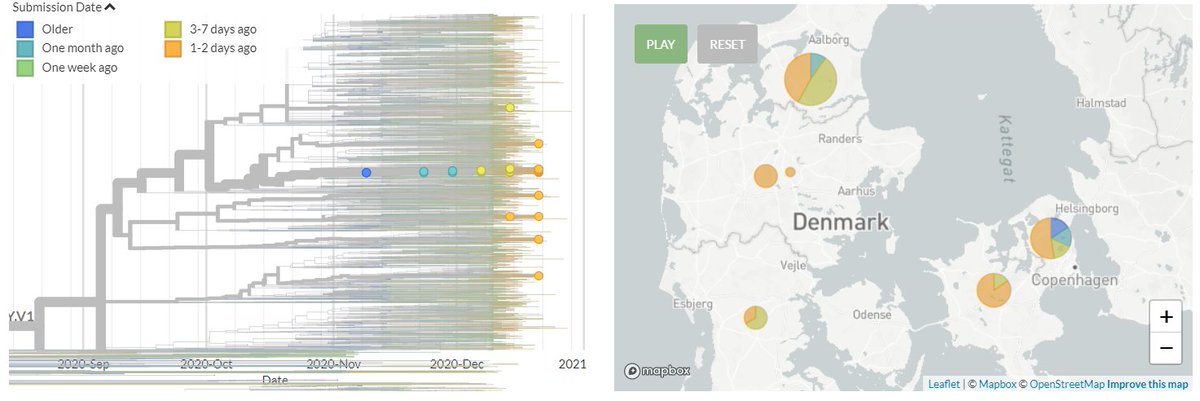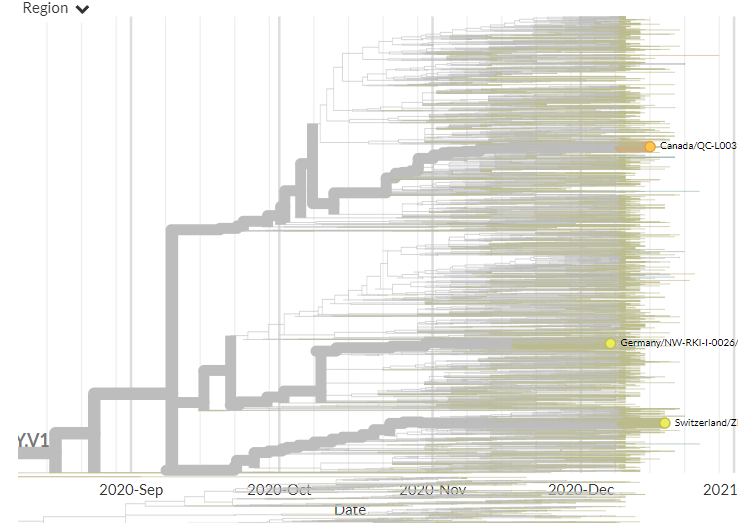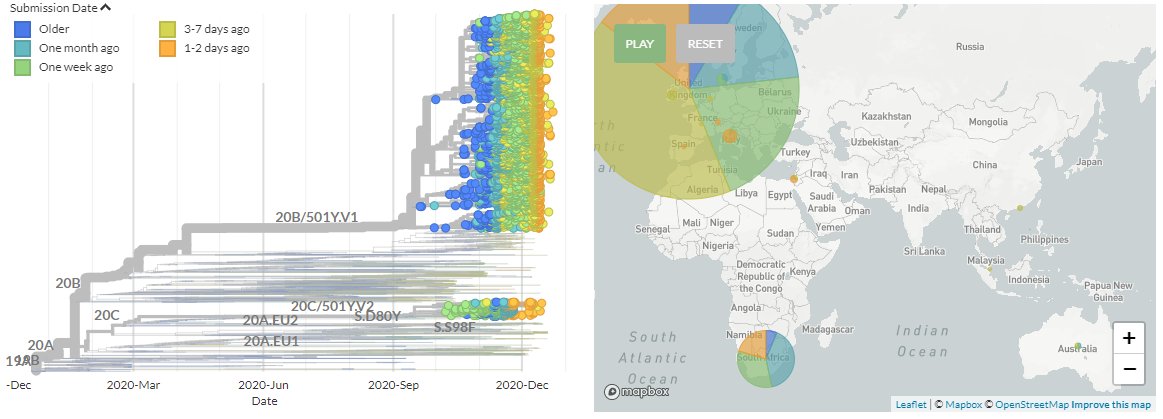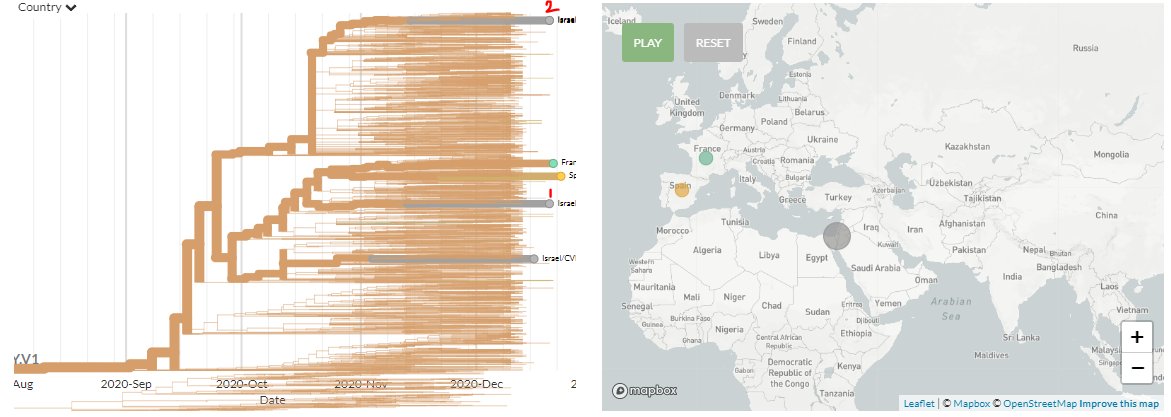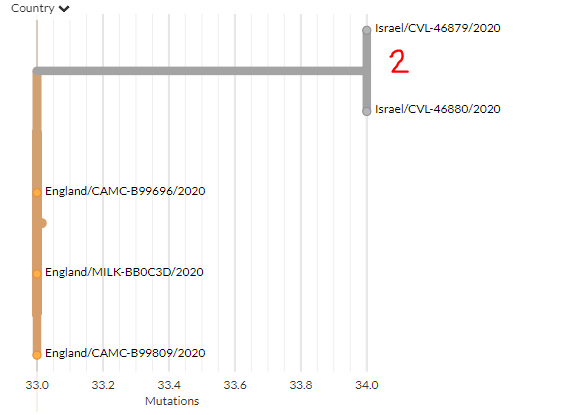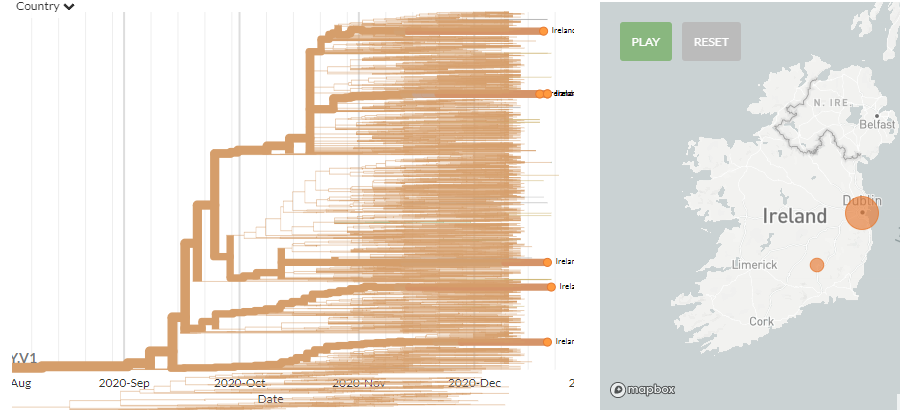
European countries have likely bought time by stopping/restricting UK flights to reduce 501Y.V1 (B.1.1.7) import. Vaccine rollouts are progressing, & spring is around the corner.
But what do the next few months have in store? What should we be preparing for? 🗓️🤔
#SARSCoV2
1/24
But what do the next few months have in store? What should we be preparing for? 🗓️🤔
#SARSCoV2
1/24
First, some good news: The fact we have a vaccine 💉 is fantastic🎉, & it will make a difference - but we likely won't have enough people vaccinated to really impact transmission levels in the next few months. We must hold fast to other methods until more are vaccinated.😷
2/24
2/24
More good news: Last spring & summer brought reductions in cases: the virus does seem seasonal.
This means spring🌸& summer🌞2021 should help reduce transmission📉, giving us a great window to scale-up vaccination before autumn🍂 & hopefully a break in strict restrictions.
3/24
This means spring🌸& summer🌞2021 should help reduce transmission📉, giving us a great window to scale-up vaccination before autumn🍂 & hopefully a break in strict restrictions.
3/24
But we currently sit at the cusp of January: we have cold, hard months ahead before spring arrives. 🥶❄️
On top of that, we have failed to keep cases low over the winter 📈, & we face a new, seemingly more transmissible variant (501Y.V1/B.1.1.7) 🦠.
What lies ahead?
4/24
On top of that, we have failed to keep cases low over the winter 📈, & we face a new, seemingly more transmissible variant (501Y.V1/B.1.1.7) 🦠.
What lies ahead?
4/24
In the UK where the new variant is prevalent, many hospitals are now more full than in the 1st wave (spring 2020). The UK has had over 50,000 cases/day for >5 days in a row last week.
In England, the case rates are growing almost vertically:
5/24
In England, the case rates are growing almost vertically:
5/24
https://twitter.com/MaxCRoser/status/1345839986063642639
Hospitalization rates in England are also growing at worrying rates, as reflected in the photos and stories of ambulances waiting outside of full ICUs.
Healthcare staff, exhausted from a year of overwork, are at risk of being overwhelmed again.
6/24
Healthcare staff, exhausted from a year of overwork, are at risk of being overwhelmed again.
6/24
https://twitter.com/ChrisCEOHopson/status/1345808254945947649
Ireland, whose proximity to the UK means it likely has the new variant in circulation, has gone from one of the lowest-case-rate countries in Europe at the start pf Dec (87/100,000) to fast deterioration by the end: 321/100,000.
7/24
theguardian.com/world/2021/jan…
7/24
theguardian.com/world/2021/jan…
The situation in the UK right now is deeply, deeply concerning. And it's a situation no other country should want to see itself in.
But after cozy holidays, reduced testing in many areas (& often reduced reporting), those of us outside the UK may feel no sense of urgency..
8/24
But after cozy holidays, reduced testing in many areas (& often reduced reporting), those of us outside the UK may feel no sense of urgency..
8/24
With or without 501Y.V1, however, most countries are still at much higher case numbers than would allow a release of restrictions soon. 📈
And cases of the new variant continue to be detected around the world, including indications of onward transmission. 🌍🌎
9/24
And cases of the new variant continue to be detected around the world, including indications of onward transmission. 🌍🌎
9/24
In Madeira, an island of Portugal where testing is done at airports, 19 cases have been detected in travelers in mid-Dec🛬
This may give an idea of # of imports arriving in other popular holiday countries which don't/didn't have airport testing.
10/24
This may give an idea of # of imports arriving in other popular holiday countries which don't/didn't have airport testing.
10/24
https://twitter.com/firefoxx66/status/1344040786346827785
Denmark's excellent sequencing program gives good insight into a situation that could be being repeated in other countries, undetected.
Danish 501Y.V1 sequences cluster together, indicating ongoing local transmission of the new variant. 🙍🏻➡️🧑🏽🤝🧑🏻
11/24
Danish 501Y.V1 sequences cluster together, indicating ongoing local transmission of the new variant. 🙍🏻➡️🧑🏽🤝🧑🏻
11/24
https://twitter.com/firefoxx66/status/1345009036790525952
This is also reflected in the proportion of sequences that are 501Y.V1: 11% of cases are sequenced - of those, the percent that are the new variant is increasing: 0.2%, 0.5%, 0.9%, 2.3%... 📈
12/24
12/24
https://twitter.com/MadsAlbertsen85/status/1345299161118343174
While UK travel restrictions have likely bought time by reducing imports, we need to prepare for some possibilities:
a) Cases already spreading within countries, just undetected 🔍
b) Imports may start coming from non-UK countries (where travel is less restricted) 🌍
13/24
a) Cases already spreading within countries, just undetected 🔍
b) Imports may start coming from non-UK countries (where travel is less restricted) 🌍
13/24
What can we do to prepare for these? A few options:
- Increase sequencing/testing within countries 🧪🧬
- Get cases down within countries 📉
- Reevaluate our travel policies 🛬
- Consider schools 🏫
14/24
- Increase sequencing/testing within countries 🧪🧬
- Get cases down within countries 📉
- Reevaluate our travel policies 🛬
- Consider schools 🏫
14/24
🧪🧬 Increasing testing & sequencing gives a better chance of detecting 501Y.V1 (& others) & shutting down transmission, as well as tracking it, if it starts to spread more widely (Are we containing it? Where is it? Is it increasing?)
These are our 'eyes' on the variant!
15/24
These are our 'eyes' on the variant!
15/24
📉Reducing cases helps overall (worst case: we get them so low we can relax some restrictions: not such a worse case!) - but in the context of the variant, it also allows #TestandTrace & sequencing systems to work better & frees up resources in case of a surge in cases 🌊
16/24
16/24
🛬While the variant is low-prevalence in a country, reducing further imports can make a difference. We should prepare that those may not come only from the UK in the future.
That means re-examining our travel policies more broadly while we are trying to reduce imports.
17/24
That means re-examining our travel policies more broadly while we are trying to reduce imports.
17/24
🛬Over the summer, 20A.EU1 showed that quarantine may not have worked as well as hoped to stop #SARSCoV2 spread.
Some countries require tests🧪 before travelling, others can do them on arrival.
Improving test & trace catches those who slip through.
18/24
Some countries require tests🧪 before travelling, others can do them on arrival.
Improving test & trace catches those who slip through.
18/24
https://twitter.com/firefoxx66/status/1321725383922909185
🏫Closing or reducing schools is not to be taken lightly -I've spoken before about the impact this has on children & parents.
But it must be part of the response we consider.
Schools are safest when cases are low: if they aren't, what do we do?
19/24
But it must be part of the response we consider.
Schools are safest when cases are low: if they aren't, what do we do?
19/24
https://twitter.com/who/status/1282757207180947463?lang=en
🏫Concerningly, evidence is mounting that schools may play a bigger role in transmission than we thought.
Many autumn lockdowns kept schools open, unlike in spring, & seemed to be less effective. Some studies have shown ⬇️ cases in school holidays
20/24
theguardian.com/world/2021/jan…
Many autumn lockdowns kept schools open, unlike in spring, & seemed to be less effective. Some studies have shown ⬇️ cases in school holidays
20/24
theguardian.com/world/2021/jan…
🏫Keeping schools open & finding safe ways to do so should be prioritized.
But that means doing away with the narrative that children don't get #SARSCoV2 & that schools might not be spreading the virus. We can't take appropriate action until we fully recognize the issue.
21/24
But that means doing away with the narrative that children don't get #SARSCoV2 & that schools might not be spreading the virus. We can't take appropriate action until we fully recognize the issue.
21/24
Unfortunately again, I am brought back to remembering times in the past, when we've watched #SARSCoV2 cases climb in other countries while imagining we are safe - it could never happen here.
We seem to prefer to wait & see 🕰️, rather than prepare.
22/24
We seem to prefer to wait & see 🕰️, rather than prepare.
22/24
https://twitter.com/firefoxx66/status/1296080785745862657
We've been in this pandemic long enough to know that waiting has never yet been the answer. Those who have acted fast & decisively, & ensured they had a plan, have faired best.
"The greatest error is not to move ... You need to be prepared"
23/24
"The greatest error is not to move ... You need to be prepared"
23/24
https://twitter.com/skynews/status/1238504143104421888?lang=en
We have yet another chance now to try & avoid further & stricter future restrictions. To reduce loss of lives & livelihoods. And these steps will help us, with or without the new variant.
"The greatest error is not to move."
Let's plan our move.♟️
24/24
"The greatest error is not to move."
Let's plan our move.♟️
24/24
https://twitter.com/skynews/status/1238504143104421888?lang=en
Getting a lot of responses to this so let me clarify: The seasonality comes from human changes in behaviour, not changes in the virus. It was aided in 2020 by the spring lockdowns. Warmer weather can *help* us control transmission more easily - but it won't save us by itself.
It's been brought to my attention that the Guardian article above is not a reflection of the latest work, & is a bad source to cite. This is true, & I'm sorry for including it. Science is still working on the exact impact of schools and transmission. (cont)
However, there are great scientists out there working on this in detail!
I really recommend following @mugecevik for up-to-date information on research with children & schools. Some of her work is linked below. (cont)
ncbi.nlm.nih.gov/pmc/articles/P…
I really recommend following @mugecevik for up-to-date information on research with children & schools. Some of her work is linked below. (cont)
ncbi.nlm.nih.gov/pmc/articles/P…
It's also unlikely that primary, secondary & universities play an equal role here either. And is likely also dependent on community rate: even if schools are relatively safer, if overall cases go high enough, you'll start to see cases in schools.
• • •
Missing some Tweet in this thread? You can try to
force a refresh






